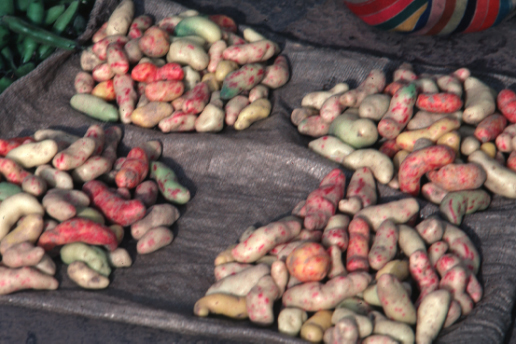
History:
Native Americans cultivated potatoes above 4000 meters (13,000 feet).

Over 2000 species belong to the genus Solanum (potato, but only eight are cultivated outside of Peru and Bolivia, the largest being Solanum tuberosum (L.) (ssp. tuberosum) (Lisi´nska and Leszczyn´ski, 1989)
Potatoes contain poisonous substances called glycoalkaloids. (Alpha-solanine
and á-chaconine are the main glycoalkaloids in Solanum tuberosum.) The
glycoalkaloid content is highest in small, immature tubers in the external layer
and in the vicinity of the eyes. The level increases after exposure to light,
but decreases with heart. Like saponins on the outside of quinoa glycoalkaloids
inhibit pathogenic fungi and potato pests (Tingey, 1984)
Glycoalkaloids affect the flavor of potatoes after cooking, causing a tart astringent
taste, or in larger quantities even bitterness (Sinden et al., 1976). The lethal
total for humans ranges from 3 to 5 mg/kg body weight (Morris and Lee, 1984).
The TGA level in potato tubers ranges from 0.002 to 0.04% on fresh weight basis
(Sinden et al., 1984; Coxon et al., 1983)
Potatoes produce the highest yields per acre 45,000 kilos per hectare; quinoa only produces 3-4,000 kilos per hectare.The total protein yield in kilos per hectare is only 450 per hectare (1%).
Irrelevant Facts. Maca (Lepidium meyenii), a Peruvian root (not a potato) commercialized for sexual dysfunction. (see Bob Dole).